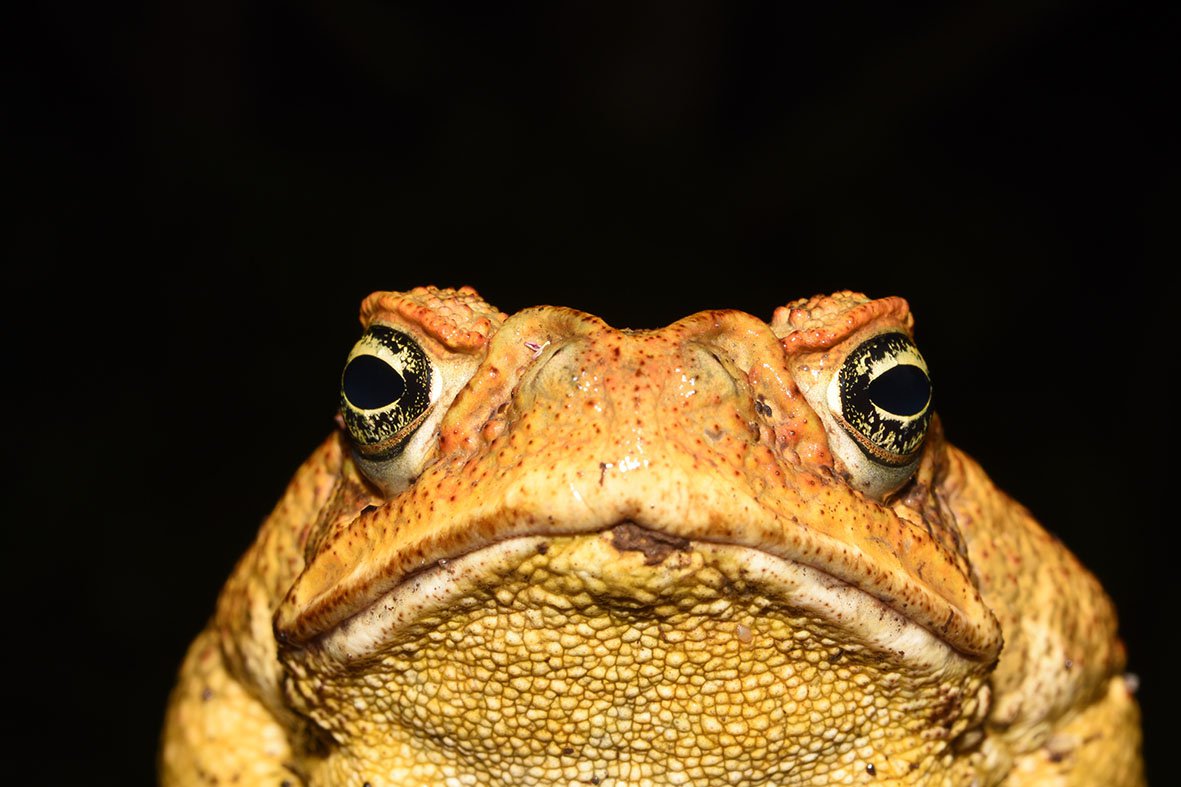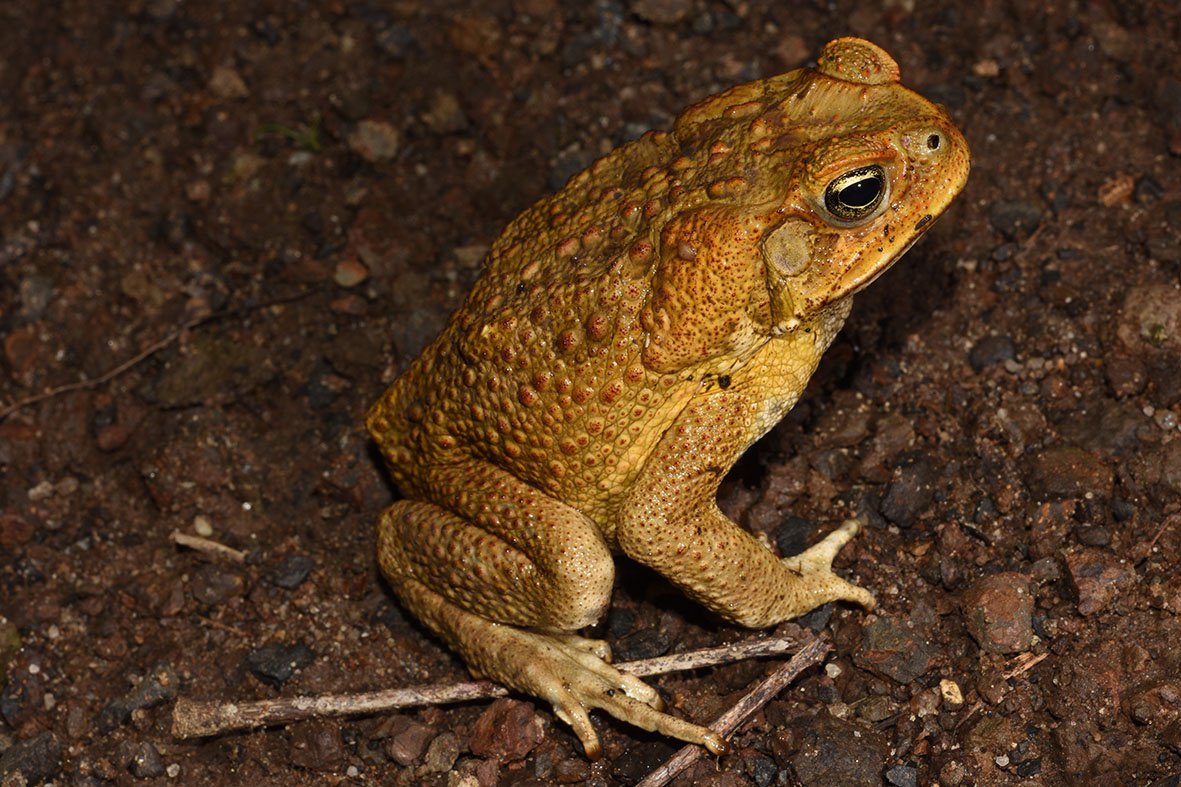Who’s eating Cane Toads and getting away with it?

Cane Toad (Rhinella marina)
Image: Jodi Rowley© Jodi Rowley
If you’re Australian, you’ve got an opinion on Cane Toads. Chances are it’s not a positive one. But did you know some Australian animals have developed a taste for toad?
Only 85 years since its introduction to Australia, the much-maligned Cane Toad (Rhinella marina) has spread throughout a whopping 1.2 million square kilometers of the country. In that time, it's made short work of many native species that mistake toads for frogs, try to eat them, become poisoned and, in many cases, die. But there are some Australian species that are much less affected by the toads’ poison than you might think, and other pioneering predators that have figured out workarounds for the toxin problem.

Cane Toad (Rhinella marina)
Image: Jodi Rowley© Australian Museum
Of the Australian animals that can safely kill and eat Cane Toads, some of the most interesting are snakes. The Keelback Snake (Tropidonophis mairii), a non-venomous species native to northern Australia, can eat Cane Toads without lethal effects, whereas many other snake species would be killed. The reason the Keelback can eat toads seems to be that its ancestors were some of the most recent snakes to arrive to Australia, having evolved in Asia. There are toads with similar toxins to those of the Cane Toad in Asia, and so the Keelback Snake has the evolutionary advantage of being 'pre-adapted' to life with toads.
The more familiar Red-bellied Blacksnake (Pseudechis porphyriacus) doesn't have this evolutionary quirk, but has done some rapid post-crisis adaptation; populations of this species in areas with many Cane Toads appear to have developed a higher resistance to the toxins and some avoid eating toads altogether. But most interesting is that in some areas, these snakes have evolved smaller heads, which physically prevents them from eating large (and therefore more poisonous) toads!

Keelback Snake (Tropidonophis mairii).
Image: Jodi Rowley© Jodi Rowley
You’ve probably heard of some crows flipping toads on their backs to eat from their soft, non-poisonous bellies, but there are lesser known stories of other birds developing a taste for toads. Black Kites (Milvus migrans) and Whistling Kites (Haliastur sphenurus) eat the tongues out of roadkill toads. There’s even a case of an Australasian Swamphen (Porphyrio melanotus) killing a Cane Toad, extracting something through its mouth, and feeding it to chicks.

Black Kite (Milvus migrans)
Image: Koshy Koshycreative commons
There are many other native animals surprising us with the ability to eat Cane Toads through tolerance and ingenuity, from insects to mammals. The Rakali, or native Water Rat (Hydromys chrysogaster) made headlines recently after being discovered making careful incisions into toads’ chests and removing the non-toxic heart and liver to feed on.
While this is undoubtedly good news, it's important to remember that responses to threatening processes vary hugely among species. Cane Toads remain a significant threat to biodiversity in Australia, and it's incredibly important to keep studying their impact, especially as they continue to spread to new areas.
Timothy Cutajar, Australian Museum Research Institute.
More Information:
- Beckmann, C. and Shine, R. (2011) Toad’s tongue for breakfast: exploitation of a novel prey type, the invasive cane toad, by scavenging raptors in tropical Australia. Biological Invasions. 13 (6), 1447-1455
- Llewelyn, J., Schwarzkopf, L., Alford, R. and Shine, R. (2010) Something different for dinner? Responses of a native Australian predator (the keelback snake) to an invasive prey species (the cane toad). Biological Invasions. 12 (5), 1045-1051
- Parrott, M. and Clulow, S. (2019) The rakali, a native water rat, found feasting on cane toads in the Kimberly. Australian Geographic
- Phillips, B. L. & Shine, R. (2004) Adapting to an invasive species: toxic cane toads induce morphological change in Australian snakes. Proc Natl Acad Sci USA. 101, 17150–17155
- Phillips B. L., Shine, R. (2006) An invasive species induces rapid adaptive change in a native predator: cane toads and black snakes in Australia. Proc Roy Soc Ser B. 273, 1545–1550
- Wilk, K. J. (2018) Australasian Swamphen 'Porphyrio melanotus' killing and processing a Cane Toad 'Rhinella marinus'. Australian Field Ornithology. 35, 72

